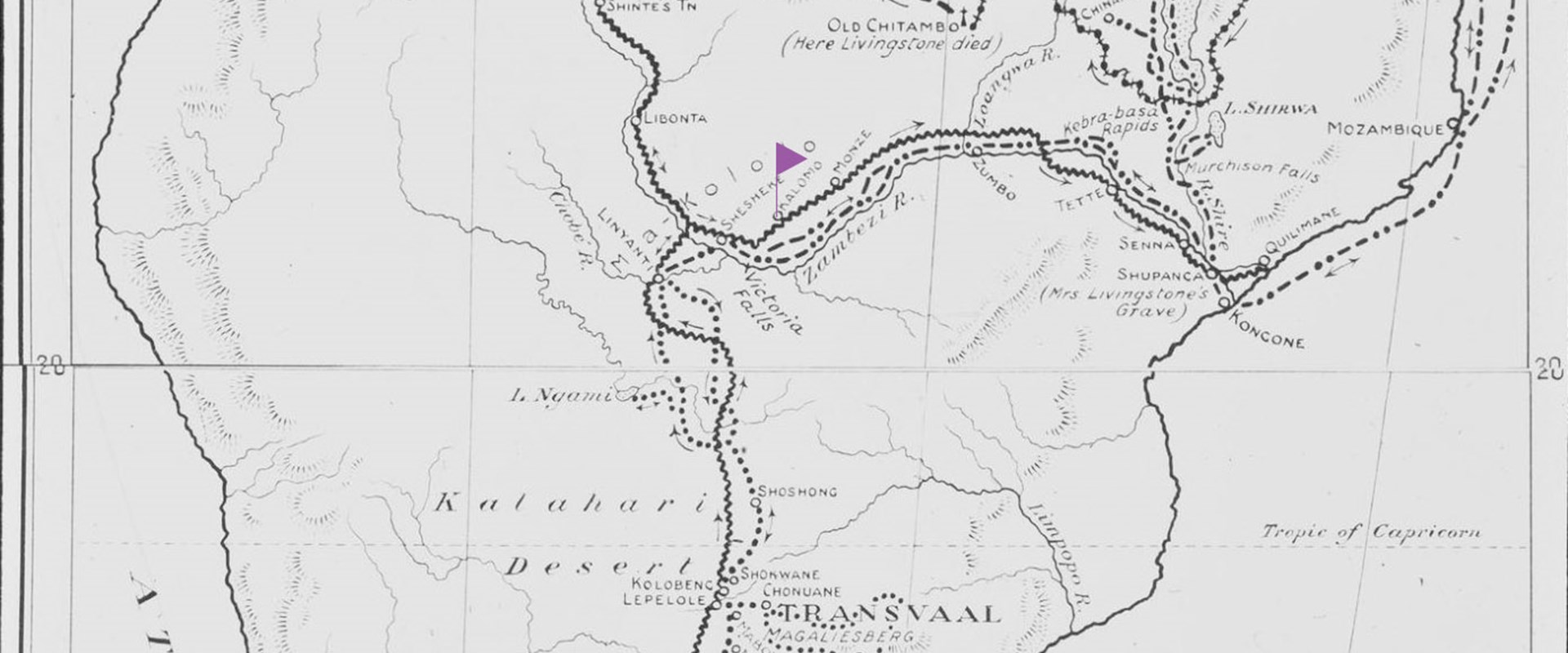Key in a search term below to search our website.
Key in a search term below to search our website.

Following a detour from the river through a section of uninhabited open country, Livingstone crossed the River Kalomo, a tributary of the Zambezi.
"On the 30th [November] we crossed the river Kalomo, here about 50 yards broad, and the only stream that never dries up on this ridge. [...] Here the granite crops out again in great rounded masses which change the dip of the gneiss and mica schist rocks from the westward to the eastward."
Travels and Research in South Africa, John Murray, London, 1912. p. 370-371. (First edition 1857)
Around Kalomo, Livingstone collected metamorphic and igneous rocks.